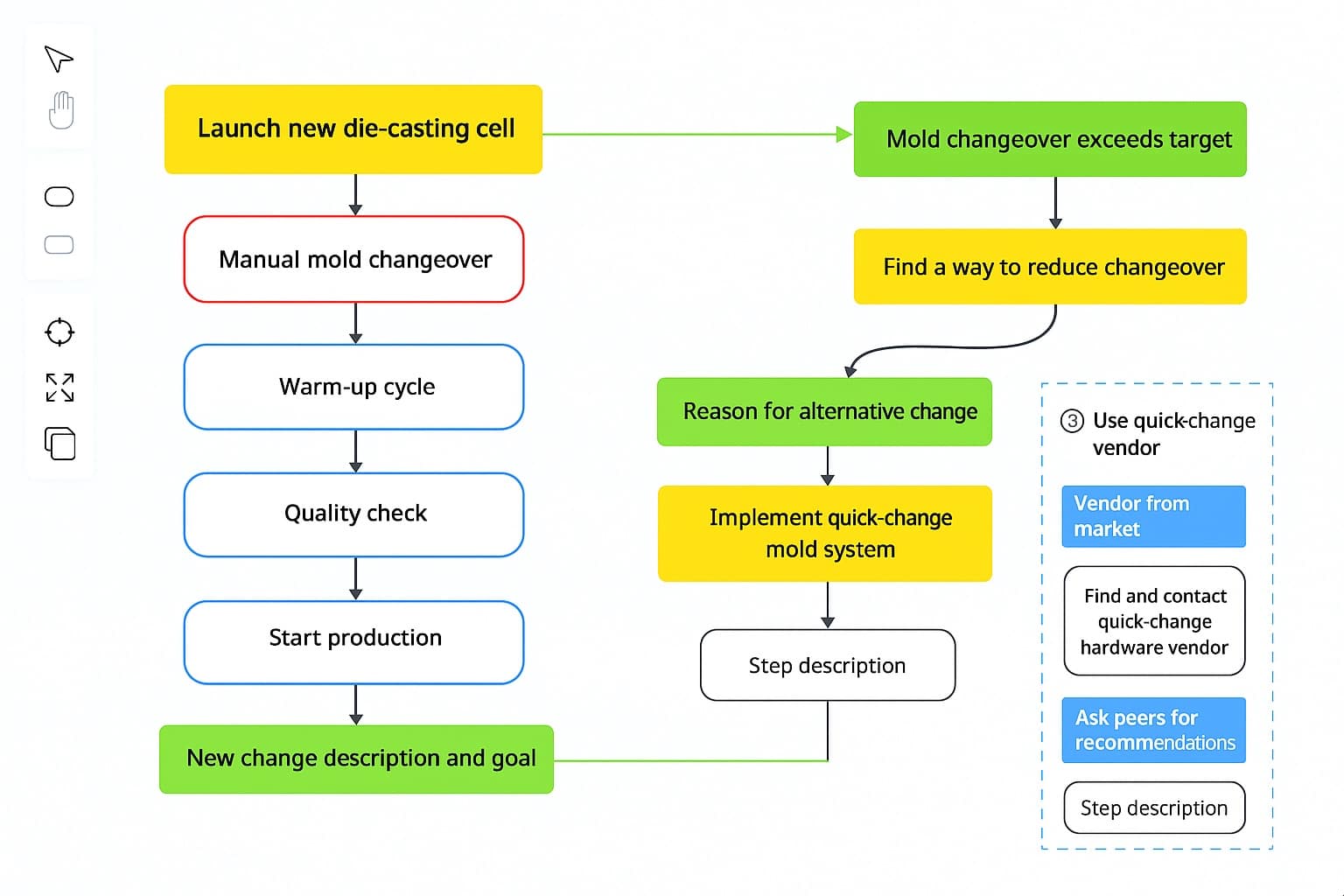Every improvement project—whether a production line upgrade or an enterprise-wide digital rollout—faces two constant threats: hidden risks and unexpected costs. Change Flow Thinking (CFT) offers a clear, visual way to reveal those threats before they derail your plans. By mapping every decision, resource, and risk on a single tree-flow diagram, teams gain the confidence to push bold ideas forward without gambling on the outcome.
What You’ll Achieve with Change Flow Thinking
- Complete visibility from idea to implementation – see each action, dependency, and approval in a glance.
- Quantified risk and cost at every step – prioritize tasks that deliver the most value for the least effort.
- A shared language for decision-making – align executives, managers, and engineers around the same data-driven picture.
- Repeatable change flow – turn one-off successes into a standard operating framework your whole organization can master.
When to Use Change Flow Thinking
CFT shines whenever the path forward feels murky:
- Launching a new product or feature that touches multiple teams
- Re-engineering a manufacturing process with tight yield constraints
- Implementing compliance changes under strict regulatory deadlines
- Scaling pilot projects into full production while managing limited resources
- Accelerating continuous-improvement programs that stall after early wins
If the cost of getting it wrong is high, Change Flow Thinking helps you get it right—fast.
Benefits of Change Flow Thinking
- Lower project risk: Identify and neutralize potential show-stoppers early.
- Faster approvals: executives see the entire change flow on one page, speeding buy-in.
- Lean resource allocation: invest effort where it drives the biggest impact.
- Stronger team alignment: everyone follows the same roadmap, reducing miscommunication.
- Scalable framework: apply the same structured thinking to projects of any size.
Try Change Flow Thinking FREE in PRIZ Playground
Ready to experience the framework first-hand? Launch a Change Flow Thinking project in the PRIZ Playground—no credit card, no downloads. Build your first diagram, invite teammates, and follow the guided workflow that turns complex ideas into a low-risk reality.
Speed Up Innovation with Change Flow Thinking
Innovation stalls when teams drown in spreadsheets and conflicting assumptions. By visualizing the entire change flow, CFT replaces guesswork with clarity. Companies that embed Change Flow Thinking report:
- Shorter ideation-to-execution cycles
- Fewer unplanned engineering iterations
- Noticeable drops in budget overruns
When your people see exactly why each task matters—and how it impacts the big picture—momentum soars.
